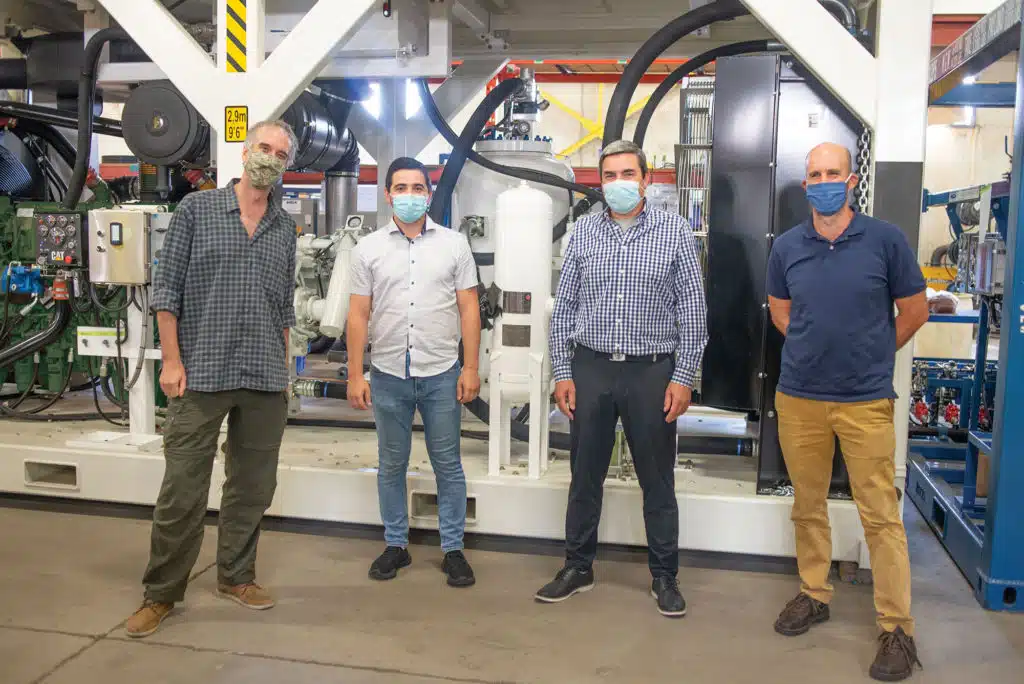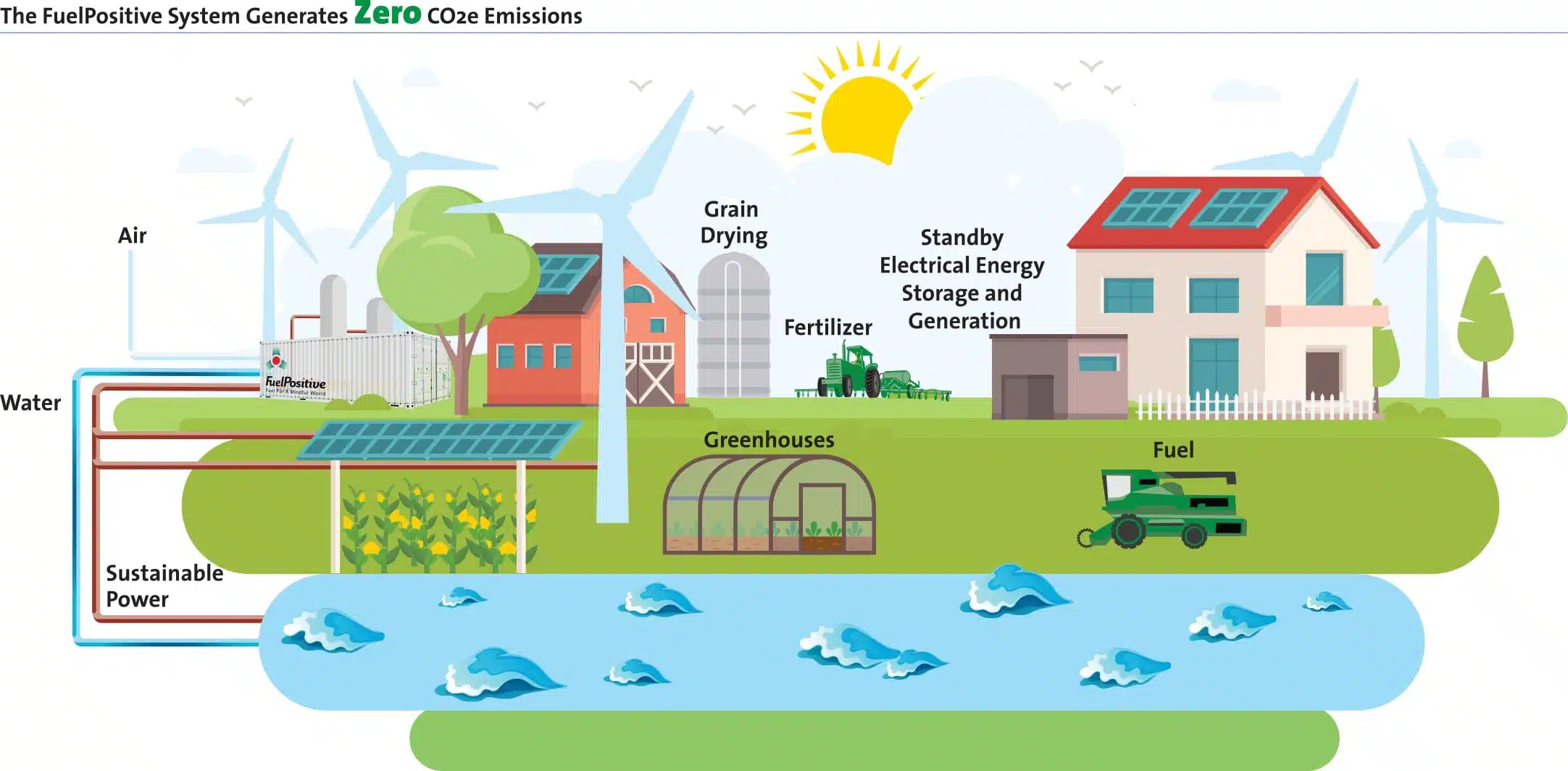“Think of ammonia as the perfect carrier for hydrogen, and if the end-use requirement is for pure hydrogen, then the safest and most practical way to get that hydrogen where it needs to be is inside of FuelPositive’s green ammonia.” – Ian Clifford, FuelPositive Chief Executive Officer and Board Chair
The ammonia industry began a century ago as a solution to a global food crisis. One part nitrogen and three parts hydrogen, traditional ammonia (NH3) was used as a fertilizer, re-introducing necessary nitrogen to nitrogen-depleted fields for growing crops.
While it continues to serve as a vital fertilizer, green ammonia is now being considered a key factor in our fight against climate change. Instead of the nitrogen portion of the molecule being prized as it was in the past, it is now green ammonia’s ability to capture, store and ship hydrogen that is exciting – making the hydrogen economy possible in the near future.

The Problem with Hydrogen
Globally, the hydrogen economy has become a goal. The idea is to replace fossil fuels with hydrogen which produces no carbon emissions when used as fuel. But making the switch is rife with problems.
1. Manufacturing: The problems begin with its production. Hydrogen doesn’t exist on Earth in its pure form. It needs to be produced, using electricity. Today, roughly 95% of hydrogen is produced using fossil fuels in an emissions-intensive process, with each kilogram of hydrogen resulting in 10 kilograms of carbon being emitted. There is a great deal of interest in producing it using sustainable electricity, but the requirement for intensive energy to produce pure hydrogen remains – and there are two additional problems – storing and transporting it.
2. Storage: Pure hydrogen is highly volatile and must be stored safely, but storing it is challenging. As a gas, it requires cryogenic storage or extreme pressure storage vessels to keep the hydrogen intact. As a liquid, it boils off at normal temperatures.
3. Distribution: Transporting hydrogen, which is highly volatile, is equally challenging. Because it is the smallest molecule, hydrogen works its way between the crystalline structure of metals, making them brittle, resulting in cracking and failure. There is no distribution infrastructure in place now that could handle hydrogen.

We can imagine it, but in actuality, the hydrogen economy is many years away and may never be practical.
Problem Solved with Green Ammonia
FuelPositive’s green ammonia, produced using our production system, presents an almost immediate solution to the problems associated with pure hydrogen. In fact, we believe it is the enabler of the hydrogen economy.
The H in ammonia (NH3) is hydrogen. Ammonia is hydrogen-dense.
1. Manufacturing: Using our production system, our green ammonia requires less energy than conventional ammonia to produce, with no carbon emissions. In fact, not only does the production of our green ammonia require less energy than producing hydrogen on its own, but it stores 65% more hydrogen than highly compressed pure hydrogen.
2. Storage: Our green ammonia can be stored at normal temperatures without extreme pressurization.
3. Distribution: Our green ammonia can be produced on-site, using our modular, scalable and portable production system, eliminating the need for a complex distribution system.
Once the green ammonia has been delivered, the hydrogen can be removed for use, or you can simply use the green ammonia as fuel. When used properly, in agriculture or as a fossil fuel replacement, the only discernible emissions will be water vapour, or in the case of agriculture, some hydrogen emissions which are completely inert. Nitrous Oxide (NOx) emissions, associated with traditional ammonia, will be avoided by using a catalytic converter in engines and by injecting the liquid fertilizer deep into the ground and utilizing inhibitors (already standard practice) in farming.






